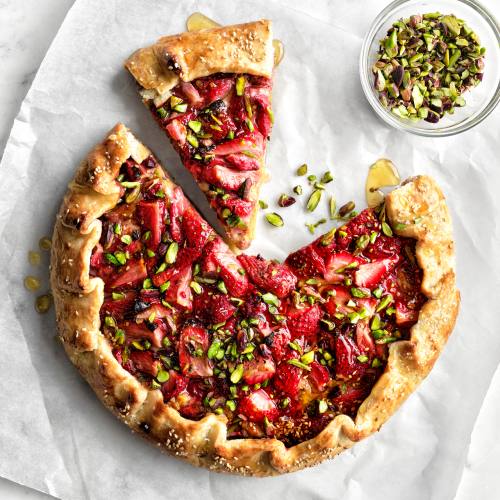Caring for Copper
Both beautiful and supremely functional, copper is enjoying a well-deserved surge in popularity in kitchens everywhere. This isn’t surprising when you consider that copper is one of the best materials available for conducting heat. It heats rapidly and evenly and cools down quickly, providing maximum control of the cooking process, making copper cookware ideal for everything from high-heat searing, sautéing and frying to gently simmering sauces. And because copper reacts naturally with egg whites to make them more stable when beaten, copper bowls are prized by many bakers. At the same time, copper has a gorgeous glow, and most pieces can be allowed to naturally acquire a rich bronze patina, or they can be polished to a gleaming finish, as you prefer. Whichever you choose, your copper collection will look beautiful hanging from a pot rack or lined up on your kitchen counter.
Caring for copper is easier than most people imagine, and a little bit of care will preserve your copper cookware, serving pieces and other kitchenware through a lifetime of use.
A few simple rules apply to caring for most copper.
1. If a surface is not going to touch food, it is perfectly acceptable to let a greenish patina develop over time, if you like. Some people prefer the rustic look of aging copper, while others prefer theirs polished to a high gleam. However, if the copper is going to come into contact with food, it should be polished periodically, or the verdigris can rub off in the food.
2. If you choose to polish a piece, using a high-quality copper cleaner like Mauviel’s Copperbrill is best. Simply apply a small amount of the paste to a sponge or soft cloth to polish the item, then rinse with water and dry thoroughly.
3. Never put copper in the dishwasher, and never use steel wool or abrasive sponges or scrubbers to clean it, as they can scratch copper’s surface.
4. After washing copper, dry it immediately; do not let it soak overnight. Water left on copper will increase the rate at which it tarnishes.
Remember, however, that copper is often used in conjunction with other metals in order to make it suitable for a wide variety of uses, so read below for details on caring for specific products.




Lined Copper
Because copper reacts with acidic ingredients, most copper cookware is lined with a nonreactive metal such as tin or stainless steel. The linings of these items should not be polished but should instead be washed with soap and water and dried by hand. The copper exteriors may be polished.
Tin linings, unlike stainless steel linings, will become discolored over time; this is normal. Tin-lined copper cookware may also need to be re-tinned during its lifetime. You will know it’s time to have your pots and pans re-tinned when you start seeing some copper showing through the lining. This may happen after a few years or may not happen for many years, depending on how often you use your cookware and what you cook in it.
Unlined Copper
Copper bowls, unlike copper cookware, are typically made of solid unlined copper; professional chefs most often use bowls like these to whip egg whites to frothy peaks. Copper is the ideal material for this task as it reacts naturally with the whites, making them more stable when beaten so they almost triple in volume.
Pastry chefs and confectioners also rely on unlined copper pots to heat sugar or sugar syrups for making candies and desserts because the copper heats so evenly and heats and cools so quickly. These pans are perfect for preparing everything from pralines, caramels and hard candies to Italian meringue and buttercream frostings.
Unlined copperware must be kept polished, or the verdigris can rub off on your food.
Lacquer-Coated Copper Plate
Some kitchen tools are made from zinc or stainless steel with a copper-plated exterior. In many cases, these copper-plated pieces are coated with lacquer or a corrosion-resistant finish to prevent them from tarnishing. These pieces should be washed with a mild soap and water, then dried thoroughly. It most cases they should not be polished, because copper polish can remove the protective coating.
Copper-Colored Items
Some kitchen tools, such as some serving spoons and spatulas, although copper colored, are not actually made of copper at all. Instead, they are made from stainless steel with copper-colored titanium plating, which does not tarnish. Check the manufacturer’s instructions for care, but most of these items are dishwasher safe.








